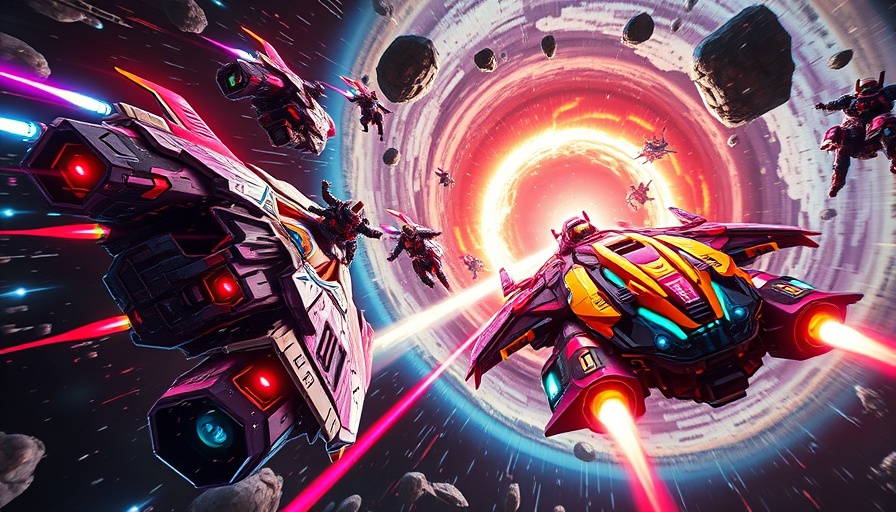
Exploring the Cosmic Adventure of Wildgate
Fans of multiplayer action games and adventures in space have a new title to look forward to. Wildgate, the newest game from Moonshot Studios, known for its visionary developers including former Blizzard CEO Mike Morhaime, promises to redefine the gaming experience by blending captivating storytelling with player-driven exploration. In the reveal trailer, players are thrust into the dangerous frontier known as The Reach, where they assume the role of Prospectors in search of untold treasures and legendary artifacts.
Thriving in Chaos: A New Take on Multiplayer Mechanics
One of the game's most thrilling aspects is its focus on teamwork and ship management. Players can assemble crews of up to four Prospectors to scavenge loot and upgrade their vessels, echoing elements that made Sea of Thieves a hit. The mechanics extend beyond mere battles; players face environmental challenges such as cosmic storms and hazardous anomalies that could harm their ships if they're not careful. The gameplay demands quick thinking and collaborative strategies as crews fend off opponents while dealing with the perils of the cosmos.
The Allure of Progression: Enhancing Gameplay
Unlike many other games in the genre, Wildgate places a strong emphasis on mid-match progression. Not only do players upgrade ship guns and personal weapons, but they also encounter a rich variety of artifacts and treasure hidden across The Reach. The reveal trailer hints at some strategies involving devious traps and diversions to outsmart rival crews. Such an emphasis on gameplay growth promises to make each adventure unique, keeping players engaged and continuously coming back for more.
Visual and Emotional Appeal: An Immersive World Awaits
The artistic design showcased in Wildgate's reveal trailer suggests a vibrant yet treacherous universe. With awe-inspiring celestial bodies and intriguing ship designs, players are steered into an immersive experience. The trailer also introduces a range of characters, from a four-armed brawler to an insectoid alien capable of disappearing, fostering diverse gameplay styles. These nuanced character options not only promise varied strategies but also allow players to connect on a deeper emotional level with their avatars.
The Future of Space-themed Multiplayer Games
As the gaming landscape evolves, Wildgate represents a significant innovation in multiplayer experiences. Its marriage of classic loot-driven gameplay with modern mechanics promises fresh dynamics that will excite both veterans and newcomers in the gaming community. As we anticipate the release, gamers can only wonder about the new avenues of interaction, combat, and exploration Wildgate will introduce. The success of this game will likely prompt other developers to explore similar themes, further expanding the space genre within multiplayer gaming.
Are you ready to dive into the depths of space with Wildgate? Explore what awaits in this thrilling new adventure full of exploration, danger, and camaraderie.
 Add Row
Add Row  Add
Add 




Write A Comment